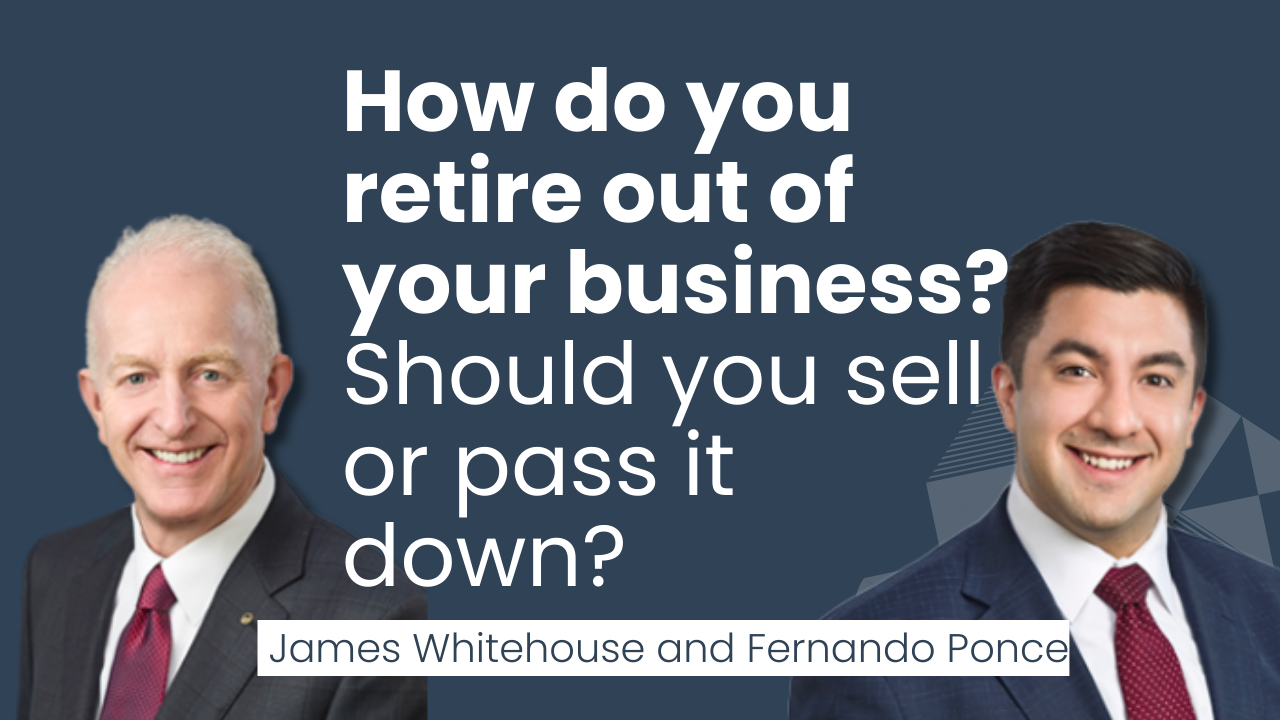Timing CPP and OAS
By Nathan Peterson • June 30, 2025

Six Steps to Choose the Right Moment to Receive Your Government Retirement Benefits
When it comes to retirement, many Canadians are happy to start taking their CPP and OAS benefits the moment they are eligible.
But that choice made without a clear strategy can lead to unintended, costly consequences that might last a lifetime.
Timing these government benefits is not just a question of age. They impact your long-term income, tax exposure, and financial freedom in the years ahead.
Pause to consider the ripple effect of that one decision. If you are within two to three years of retirement, now is the time to understand what is at stake.
Why Timing Is Not Just About Age
Choosing when to start CPP and OAS is not only about picking an age off a chart. Instead, there are four other personal variables: your health, your finances, your goals at the beginning of retirement, and your long-range vision of your later retirement.
Your Health is a Factor:
If your health is uncertain or your family history suggests a shorter lifespan, taking CPP or OAS earlier may help you enjoy your retirement income while you can. But if your health is strong, the higher lifetime income from deferring these benefits may give you more flexibility later on, especially when other savings start to dwindle.
Financial Variable:
Your finances matter too. You may not need the extra monthly cash today if you are still working part-time, receiving a pension, or have a well-built portfolio. In that case, deferring these benefits can strengthen your income foundation for the years ahead.
Your Goals for the Early Period of Retirement:
Do you plan to travel early in retirement or spend more in your first few years of freedom? Or is your priority to minimize taxes, maintain simplicity, and preserve your capital for future needs?
Your Goals for the Later Period of Retirement:
Finally, your long-term vision will shape everything. Do you want to ensure you have a stable income into your 80s and 90s? Do you want to support a surviving spouse with higher benefits? These decisions are not about maximizing a number but about aligning with the retirement you want.
Your 6-Step Decision Framework:
Now, let’s get into it. When I sit down with my clients, these are the six areas that soon-to-retire people will want to consider, and I ask about. Use these six steps to navigate this decision with clarity and confidence, using the same approach I take with my clients.
1. Understand Your Options and How the Numbers Work
You can begin receiving CPP as early as 60, or delay it to any year after until age 70, and later.
If you start at 60, your monthly benefit is reduced by 36% compared to taking it at 65. On the other hand, delaying until 70 gives you a 42% boost in payout.
Consider the significance of this increase: For example, a $1,000 benefit at age 65 becomes $1,420 at age 70, guaranteed for life. If taken at age 60, the benefit is about $640 monthly.
OAS works slightly differently. You can begin receiving it at 65, or delay up to age 70. For every month you defer, your benefit increases by 0.6%. That is a 7.2% yearly boost, up to a maximum of 36% if you wait until age 70.
Keep in mind also that the government may increase your benefit payments annually, using the consumer price index to keep pace with inflation.
2. Ask the Right First Question: Do You Need the Money Now?
Here is the most important point: if you need the money, take the money. It does not matter what the math says if you are short on income. Taking CPP and OAS earlier may be necessary if you have already stopped working or have limited savings. Retirement is not the time to pretend cash flow does not matter.
But if you have flexibility, are working part-time, have other savings, or do not yet rely on government benefits, then waiting can provide a much stronger foundation later in life.
3. Know the Tax Implications
Both CPP and OAS are taxable income. That is often overlooked.
Ask the government to withhold 30% tax at source so you are not stuck with a tax bill at year-end. This is especially important if you have multiple income sources. Planning ahead can prevent tax shocks and keep your retirement on track.
4. Think Long-Term: Plan Based on Longevity, Not Fear
Many people say, "I want to take it early in case I die early." But that is not planning. That is panic. It is not smart to design a retirement plan around the fear of dying young. You need to assume you will live into your 80s or 90s, because statistically, you probably will. (According to Statistics Canada, the average life expectancy for a 65-year-old today is 86 for women and 83 for men, meaning many Canadians will potentially spend two to three decades in retirement.)
That higher CPP and OAS income will make a massive difference later on, especially as other savings start to decline.
5. Realize That Most People Will Not Get the Maximum Amount
You have probably heard people talk about “maximizing” CPP.
Here is something few understand: most people will never qualify for the maximum CPP. With a high annual income, over many years, you may receive close to the maximum. Other than that, CPP benefit payments are based on a complicated government calculation that is never fully disclosed. You will not hit that number if you took time off, worked part-time, or started late. You can check your actual estimate using your My Service Canada Account so that your assumptions are realistic.
6. Coordinate Benefits as a Couple
For couples, there is an even greater opportunity to plan. If one of you delays CPP and the other takes it early, you can balance short-term needs with long-term income growth.
It is possible for a 70-year-old couple with maximum benefits to receive approximately $5,000 per month combined from CPP and OAS.
What Is at Stake If You Get the Timing Wrong?
If you default to taking CPP and OAS as soon as you are eligible without determining your possible benefits or thinking long-term, you may be walking into a costly mistake.
Your decisions regarding timing are “locked in”. Claiming CPP at age 60 means a 36% reduction in your lifetime of monthly income compared to starting at 65. Waiting until 70 gives you a 42% boost to your CPP. OAS offers a 36% increase if you wait. Remember, benefit payments can be adjusted annually by the government using the consumer price index as a guide.
Starting too early without proper tax planning can lead to Old Age Security clawbacks, higher taxes, and reduced flexibility in your retirement income strategy.
This is not just about monthly dollars. It is about your sense of control, your freedom later in life, and your ability to adapt if things change. A poorly timed decision now can limit your options when you need them most.
Final Thought: Make a Decision, Not an Assumption
The biggest mistake you can make in timing your CPP and OAS benefits is to leave the decision to chance.
Do not assume earlier is better. Do not assume later is always best. Plan ahead with facts. Look at your income needs. Factor in taxes. Choose the combination of timing that gives you the most long-term stability. In retirement, cash flow is king. Make sure yours is strong, steady, and designed to last.
We are always available to discuss your situation and assist you with your planning.
Latest Posts












